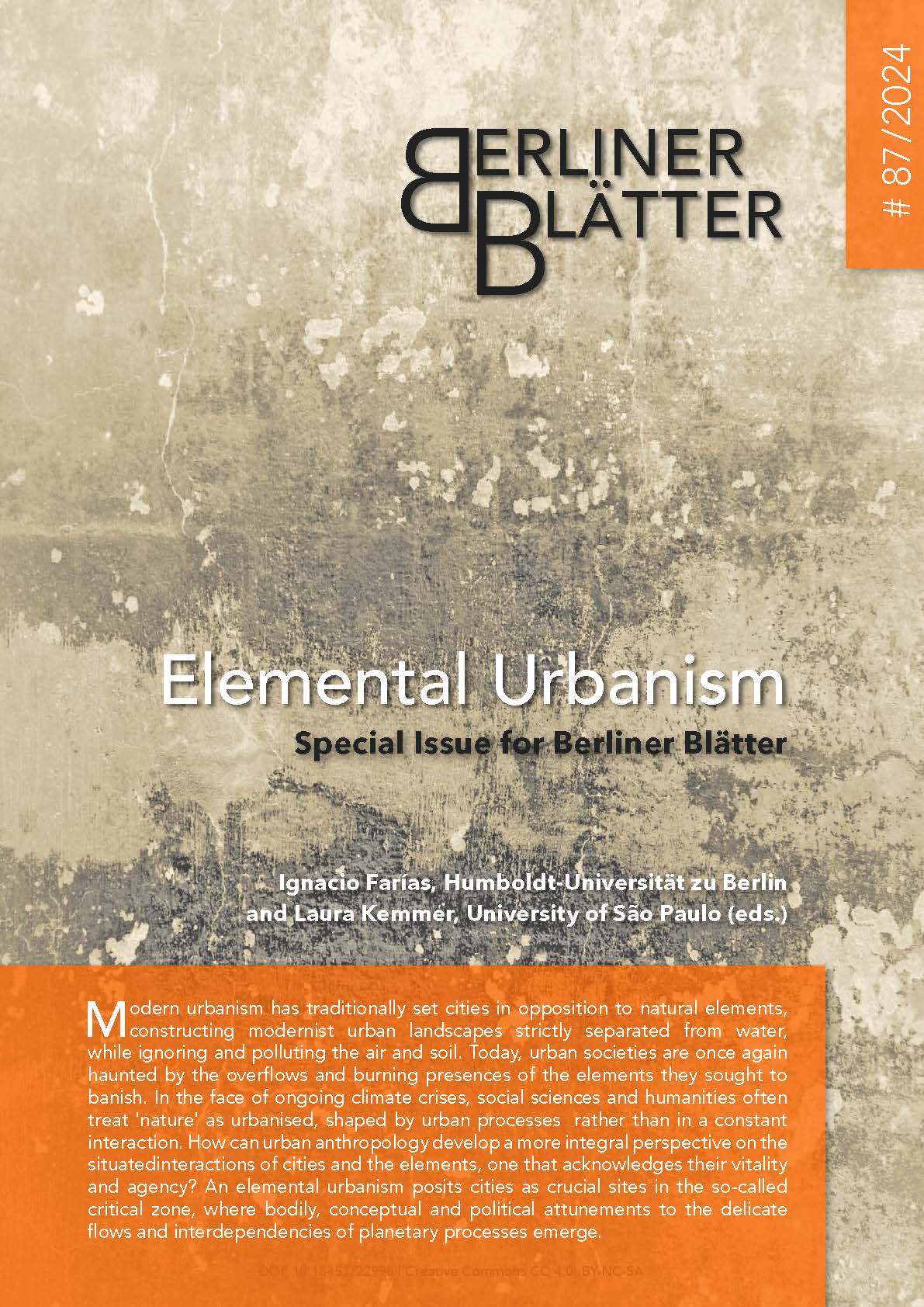Brown Spree
Between flourishing landscapes and feral dynamics in Lusatian post-mining landscapes
DOI:
https://doi.org/10.18452/28586%20Keywords:
coal mining, anthropocene, water, anthropocene landscapes, sensory ethnography, LusatiaAbstract
The Lusatian coal mining area is to become an attractive holiday region for city dwellers. Former open-cast mines are being flooded with water to create the Lusatian Lakeland. At the same time, a complex interplay of hydrochemical, geological and technical processes is causing waters in the region to turn brown decades after the closure of a large part of the opencast mines - the phenomenon is called the Brown Spree. In this article, I take a look on these post-mining landscapes as anthropocene landscapes. In doing so, I highlight frictions between the supposedly 'flourishing landscapes' of the future tourism region and the unintended effects of coal mining - which I define with Tsing et al. as feral dynamics. By looking at these frictions, it becomes clear how a narrative of progress seems to be perpetuated in the staging of the design of the Lusatian Lakeland, which in turn is unsettled by the phenomenon of the Brown Spree.
Downloads
Published
How to Cite
Issue
Section
License
Copyright (c) 2024 Berliner Blätter

This work is licensed under a Creative Commons Attribution-NonCommercial-ShareAlike 4.0 International License.








